During the fall semester of 2017, I taught the Star Trek: The Next Generation episode “Darmok” to my Developmental English class. Students’ skill levels vary in my class, but to generalize, they tend to have trouble with certain elements of reading comprehension. For some, this is due to the fact that they’ve only recently become fluent in English. For others, they just haven’t been given the chance to experience a wide enough variety of texts. They’re all incredibly strong when it comes to expressing themselves, but many find it difficult to interpret someone else’s thesis.
I wanted to craft a lesson that would do two things. First, for the upper-level learners, I wanted to show them how to translate metaphor, perhaps the toughest and most common literary device. Second, for the entire group, I wanted to model the frustration that comes with reading, especially tough reading. This model, I had hoped, would demonstrate how even a smart, experienced individual can feel hopeless in the shadow of difficult text. It would also affirm the virtue of persisting, working through the problem, resisting violence, bridging the linguistic gap peacefully, and breaking through into new understanding.
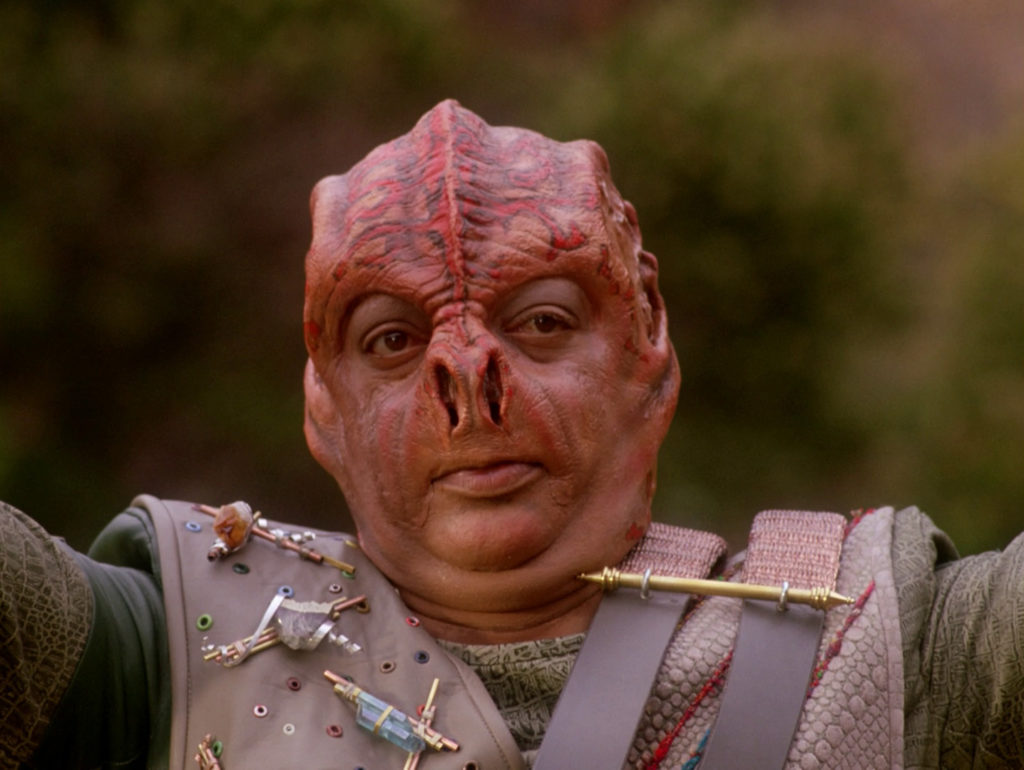
“Darmok” was perfect. A brief episode recap: Captain Dathon, a Tamarian, beams Captain Picard to the surface of neutral El-Adrel in order to establish communication between their two civilizations. It soon becomes clear that Dathon’s people speak in metaphor, referencing moments in Tamarian lore. Once Picard decodes this, the two are able to work together to ward off a mysterious common enemy. The story seemed tailored to my lesson plan’s objectives.
But I was nervous. Would this diverse crew of students really be into a Star Trek episode? Would they “get it?” (Of course, the purpose of the episode is, at least in part, not “getting it.”) Were they just, I don’t know, too cool for this?
Talk about projecting my own anxieties onto the personalities of my students. What I came to realize later is that I was making a grave, if maybe common, cultural error. I didn’t think of my students as Trekkies because they didn’t “look” like Trekkies. This is absurd because there is no “look” to Trekkies. Trekkies come in all different shapes, sizes, creeds, backgrounds, neurological make-ups, and ethnicities – it’s what makes this fandom so strong. Yet, perhaps what stuck in my mind at the time was the problematic Big Bang Theory-ish Trekkie stereotype: someone who’s bookish, an outsider, typically white, typically male. I couldn’t have been more wrong.
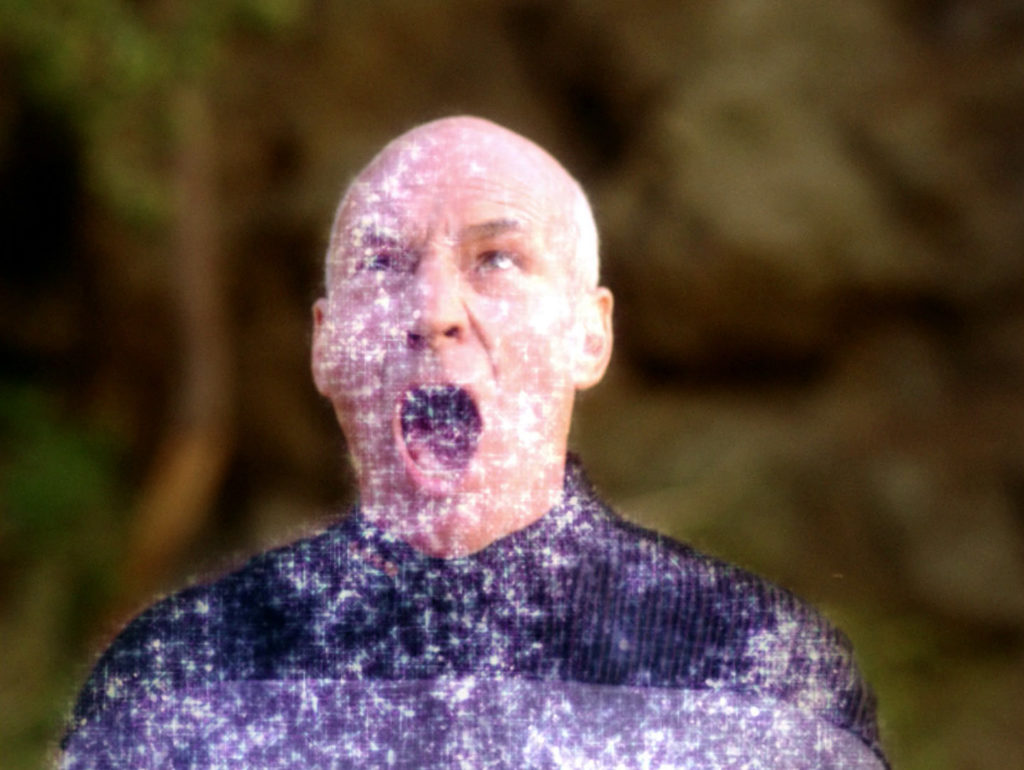
I began with brief discussion with the basic question, “Who’s heard of a show called Star Trek?” Many hands went up. One of my students had watched every episode of The Next Generation. She loved it. Of course, some students had no idea what the show was, but that was okay. Those familiar explained it, and they did so more succinctly than most Trekkies could (myself included). This conversation didn’t last more than 10 minutes. It’s not important that everyone understands the entire Trek canon. All they need to know is the basics: Science fiction. People in a spaceship. They explore the universe. Done. We’re off to the races.
We screened the episode with me thinking, more than once, “Well at least I’m enjoying this!” As the episode was playing (and a bit after the episode was over), I had my students answer the following questions:
- Describe what the characters are doing at the beginning of the episode.
- What conflict arises that must be solved quickly? What are the consequences for not resolving this conflict?
- Which characters become frustrated with one another? Why?
- What are some different ways characters try to resolve the main conflict of this episode?
- What finally solves the big problem these characters have in this episode? How does this change their lives?
Looking around the room as the episode was playing, students were writing diligently, their attention fully held by what was on screen. And why wouldn’t it be? A great story is a great story. When the episode ended, I flicked on the lights, gave the students a few minutes to polish their answers, and we started our discussion. One student who had never seen a Star Trek episode before said, “Whoa it’s like this? Now I wanna watch them all!” That put a smile on my face.
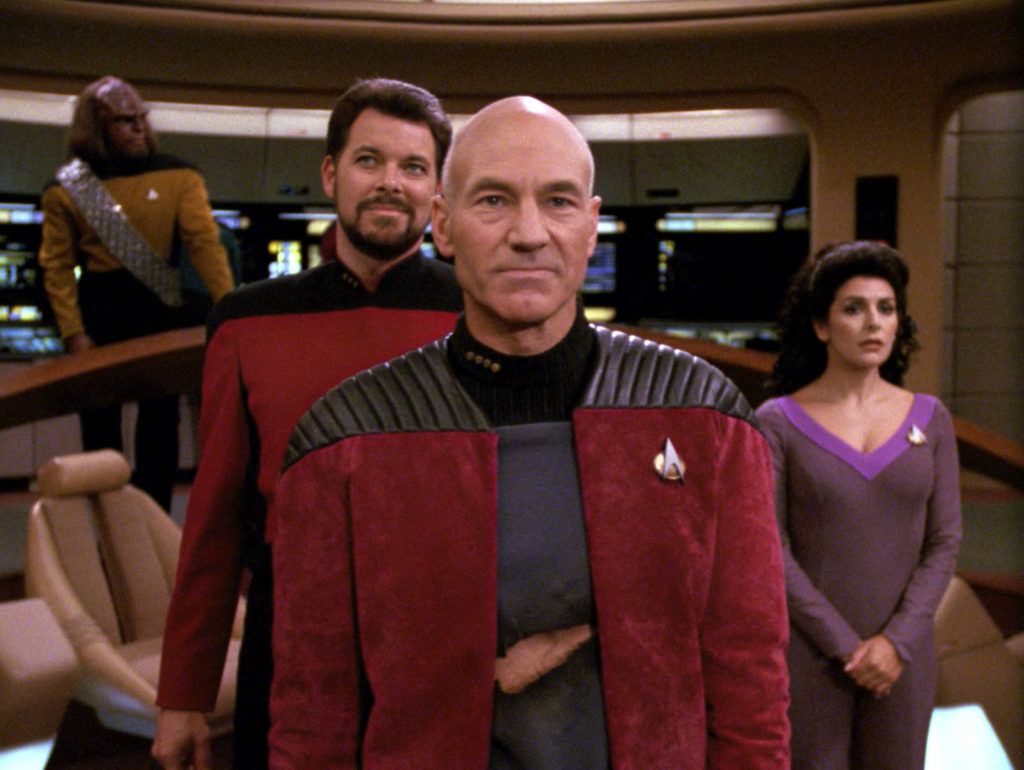
The discussion was lively, with many students chiming in to express their thoughts on what they had just seen. Instead of trying to reproduce more exact quotes from that conversation, I’d like to offer a few verbatim anonymous student answers (they turned in their worksheets, so I have access to what they wrote) to some of the above questions:
As to Question 1: “At the beginning people trying to communicate with alien people but they have problem with language. Their captain goes to the planet to find the way to communicate with them.”
Question 2: “The captain got teleported to the planet because the Tamarians wanted to learn their language.”
Question 3: “They had conflict with each other because they couldn’t understand each other.”
Question 4: “They were just making guesses or predicting what would happen which they don’t know if it would happen or not. (Communication, solving the metaphor.)”
Question 5: “Picard starts to understand what the other captain was saying when they were together. Picard understand the Tamarians intentions between their people.”
(Note: Each response, above, represents the words of a different student. Language and style vary, but I think, in each, meaning is clear.)
From reading the students’ responses, I could glean that they understood the plot, but could they really transform the lesson of the episode into their own lives? I decided to find out. For a writing assignment that took up the rest of the class (it was a 2 hour, 10 minute period), they wrote about how they might personally connect to this episode. Here’s what one student said:
“I can use the lesson of this episode in my life because when I just came to America 3 years ago I met a lot of new people with different languages, however it was hard for me to understand because I was my first time hearing new languages. This can apply to my life because at first I was having big problem understanding the different languages but I never give up instead of doing that I put myself into a learning stage and the outcome was good because now I am able to understand more.”
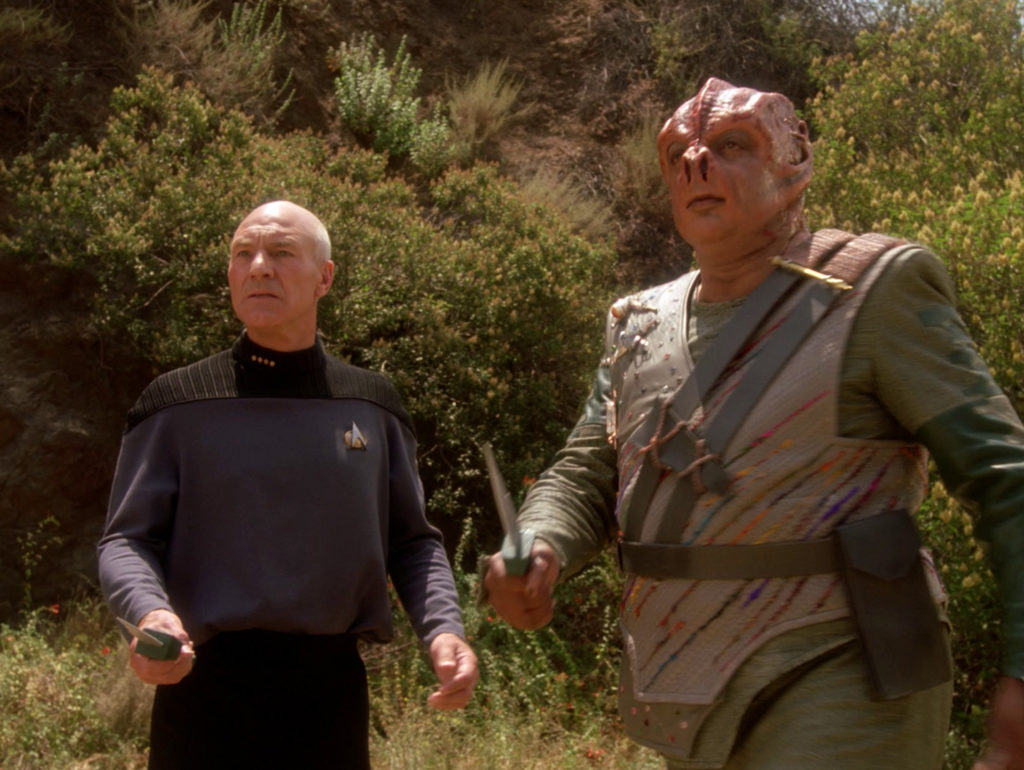
Responses like this were common. Students identified with Picard’s struggle to understand Dathon. They also felt Picard was right to persevere, and that they could, too. In America, we are often the Tamarians, speaking in references to a shared cultural memory. “That’s the bee’s knees!” “That’s the elephant in the room.” “Don’t judge a book by its cover.” Even telling someone, “May the Force be with you” assumes a certain familiarity with a specific movie I hesitate to name on a Star Trek blog.
Every language has its own equivalent of these types of phrases, but America has a wonderful way of attracting a, to use another metaphor, melting pot of other cultures. It’s one of our strengths. Some come because they have to; they’re escaping harmful conditions in their home countries. Some come because they want to; there is a desire to be here because of family or education or work or some other reason all together. No matter the case, though, all of these people, even if they’ve learned by-the-book English, can find themselves struggling to decipher a metaphorical phrase in what will seem like a micro-version of “Darmok.”
For my students, this sort of situation is found in every book, every article, even most conversations. They are on El-Adrel, and unlocking communication means survival. Luckily, as my students have shown me time and again, they are Picard: smart, patient, driven, and eager to learn. On the El-Adrel that is America, though, the monster my students are fighting is all who would take advantage of them, all who would look down upon them, all who would utter those terrible words we hear all too often: “Go home.” Thanks to the power of education, of communication, of everything “Darmok” represents, though, I know my students will triumph, proving to any naysayer that, yes, this is their home.
(Some notes for teachers wishing to adapt this lesson: My questions might be a bit more rudimentary than most college classes, but keep in mind I teach the bare bones skills. You might want to modify these questions should you wish to try out this lesson for a more advanced group. Also, if you want my lesson plan – which is pretty much everything presented here, just put into a more traditional lesson plan format – and the worksheet I created, feel free to reach out to me at jsalexan@gmail.com. If you do this lesson, or have done a lesson like it, please let me know how it went!)
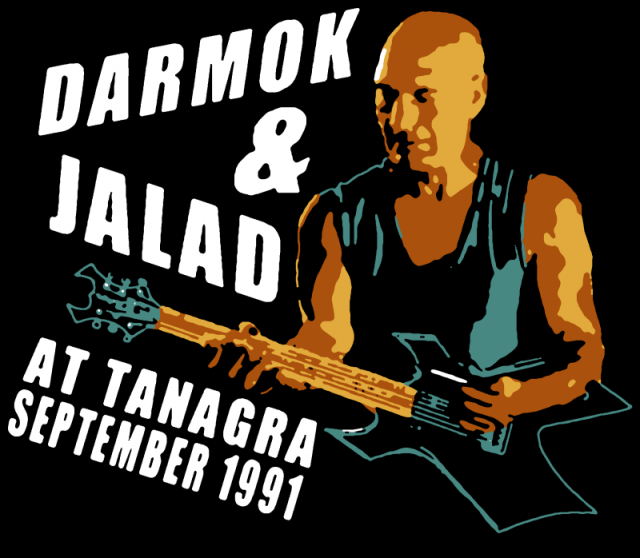
Thanks for sharing. I’ve been trying to come up with a TNG episode to use with “Dark They Were and Golden Eyed” with my 7th grade class. I think your lesson is great and could also help my students who struggle with comprehension.
I am an English professor and a massive Star Trek fan. I’m also conducting research as I build an English bridge program. This is amazing!!! You’re brilliant! Thank you so very much!
This is incredible, and is something I would like to do with my 7th grade class. Any suggestions, or ideas?